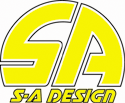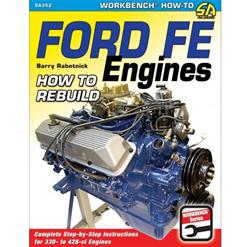
Learn what you need to rebuild a Ford FE Engine for reliability and durability from FE master, owner of Survival Motorsports, and veteran author Barry Rabotnick. In Ford FE Engines: How to Rebuild, Barry shows you how to rebuild one of these legendary engines. CarTech's unique Workbench series format takes you step-by-step through the entire rebuilding process. Covered are engine identification and selection, disassembly, cleaning, parts analysis and assessment, machine shop processes, replacement parts selection, reassembly and start-up/break-in techniques. Along the way are helpful tips on performance upgrades, trouble spots to look for, special tools required, and professional builder's tips. Ford FE engines, which were manufactured from the late 1950s all the way through the mid-1970s, were designated as the large-displacement engines in the Ford lineup. FE means Ford Edsel and reflects an era when Ford sought to promote the Edsel name. The design of these engines was implemented to increase displacement over its predecessor, the Y-Block engines of the previous decade. Early models were fairly modest in displacement, as were most big-blocks of the era, but they grew quickly to fill the needs of rapidly changing chassis requirements and consumer demand for larger vehicles. As it grew, the FE engine performed admirably as a heavy passenger car and light truck engine. It also became quite accomplished in performance circles, winning the 24 Hours of Le Mans, as well as powering Ford's muscle car and drag racing programs in the mid-to-late 1960s.
4.25 out of 5 stars
( 4 )
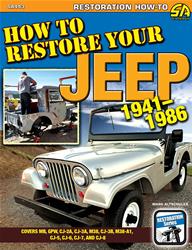
It's not a truck or a car—it's a Jeep!
Developed in the early 1940s as a light reconnaissance vehicle for the U.S. Army, the Jeep successfully transitioned from military usage to public use with the arrival of the CJ-2A in 1945. Many more CJ models followed, which cemented the Jeep as one of the most successful and longest-tenured models when the CJ-10A was discontinued in 1986.
With more than 1.5 million Jeeps sold, a restoration book for these vehicles has been desperately needed. Author Mark Altschuler of restoremyjeep.com showcases his decades of experience in this must-have 176-page restoration book that features component restoration of all aspects of the timeless Jeep. Step-by-step procedures document the disassembly, restoration, and reassembly of your favorite models, while 445 color illustrations depict exactly what you're wanting to see as you address your project.
"How to Restore Your Jeep: 1941–1986" from SA Design and CarTech is not only a handy resource that addresses the total restoration of your prized machine, but it will likely also be one of the most affordable tools that you'll purchase for your project.
Not Yet Reviewed
SA Design's Building & Tuning High-Performance Electronic Fuel Injection will help you learn to define air and fuel requirements based on rpm and horsepower. You will learn how to set up your base fuel and ignition maps to get things up and running fast, tweak your fuel and timing maps for light and heavy load situations, and adjust the timing for cold-starting or high-boost conditions. With all of the information in this book, you will never have to wonder if your tune is just right--you'll know it!
4.71 out of 5 stars
( 7 )

Take a fun and nostalgic look at the world of Volkswagen accessories. It is well documented that the VW Beetle is the best-selling vehicle of all time. In 1972, the 15-millionth Beetle was produced, breaking the record set by the Model T about 40 years earlier. It was a simple design with styling that appealed to the masses. The bug was affordable, practical, and fun. Because it was such a simple car and so many were sold, many people enjoy customizing their model with accessories, which has been a large market for these cars dating back to the 1950s and 1960s. There's even a market today for people who collect these accessories without installing them.
In SA Design's "Vintage Volkswagen Beetle Accessories," authored by veteran VW historian Stephan Szantai, a whole range of accessories are covered. Of course, a history of the Beetle is detailed, as well as the companies that formed the accessory aftermarket. Included are accessories for dressing up the exterior of the car, such as vented windows, bumpers and guards, turn-signal technology, add-on lighting, mirrors, etc. Then, interior accessories are examined, such as radios, ashtrays, gloveboxes, gauges, and clocks. No accessories book would be complete without engine accessories, covering both dress-up options and functional performance parts. Travel accessories, such as roof racks, coolers, extended gas tanks, tail racks, and coffee makers are detailed, along with wheels.
A gallery of accessorized Volkswagens of all types is featured, including Type 2 Buses; Type 3 squarebacks, fastbacks, and coupes; Karmen Ghias—and even single- and double-cab pickup body styles are included. Join the fun and nostalgic romp through VW accessory history with this new 144-page softcover CarTech title that features everything cool about customizing your VW. Includes 317 color photos.
Not Yet Reviewed
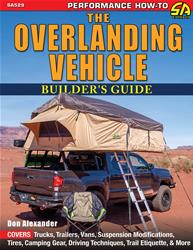
What is overlanding? Wikipedia states, "Overlanding is self-reliant overland travel to remote destinations where the journey is the principal goal. Typically, it is accomplished with mechanized off-road-capable transport—from bicycles to trucks—where the principal form of lodging is camping. Overlanding often lasts for extended periods of time—from months to years—and spans international boundaries."
In this insightful read: The Overlanding Vehicle Builder's Guide, Don Alexander provides a terrific overview of what to consider when building your overlanding rig. By understanding the wants and needs will inform you of the type of gear you'll need for the best experience. This guide includes information for the planning the duration of the trip, the number of people you will need for joining you on the "overlanding" quest, how far off the beaten path you want to go, as well as the creature comforts you will require. It also covers the strengths and weaknesses of the types of vehicles themselves, the type of modifications to the vehicles to make them more capable, and the accessories required for "overlanding", such as lighting, camping gear, food, and water storage, etc., as well as the equipment to have on hand for trail mishaps and recovery. Driving techniques and trail rules and etiquette are also included in this guide.
If you are ready to build a rig or just want to know more about the hobby, The Overlanding Vehicle Builder's Guide, by veteran racer, off-roader, and journalist, Don Alexander is a great guide to help you get started.
Not Yet Reviewed
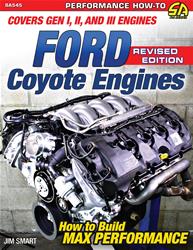
Realize your Ford Coyote engine's full potential by using this detailed resource as a guide to select the right parts for the street or the strip. Veteran Ford writer and historian, Jim Smart, explains and highlights all of the latest and greatest options to achieve more horsepower and torque—and of course, faster quarter-mile times— in "Ford Coyote Engines: How to Build Max Performance."
In this Revised Edition, now covering Generation III engines as well as Generation I and II, upgrades included are engine building techniques, cold-air induction kits, supercharger and pulley kits, better exhaust headers, fuel system and ECU tuning upgrades, and more. Both Ford and the aftermarket have produced an array of parts to squeeze even more power out of your Coyote.
Ford introduced its first "clean slate design" V-8 engines in the early 1990s in Ford, Lincoln, and Mercury models. Known as the "Modular" engine family, the 4.6L engines employed new overhead cams, multi-valve performance, distributor-less ignition, and more. This engine had new technology for its time, and it proved to be an extremely durable workhorse that logged hundreds of thousands of miles in police and taxi applications, as well as light-duty trucks. And, of course, hotter versions and even supercharged versions found their way into performance applications such as Mustang GTs and Cobras.
By 2011, Ford wanted something hotter and more current, especially for its flagship Mustang GT and GT350 models—which were suddenly competing with new 6.2L LS3 engines in Camaros and 6.4L Hemi engines in Challengers. Enter Ford's new 5.0L "Coyote" engine with Twin Independent Variable Cam Timing (Ti-VCT); it was an evolution of the earlier 4.6L and 5.4L Modular designs. Although the new Coyote engine had increased displacement, it still had far fewer cubes than the competition. Despite less displacement, the Coyote could hold its own against bigger Chevy and Chrysler mills, thanks to advanced technology such as 4V heads with better port and valvetrain geometry. The Coyote is also Ford's first foray into technology that includes Ti-VCT and cam-torque-actuated (CTA) function, which is a fancy way of saying variable cam timing for an incredible power curve over a broader RPM range. Now, in Generation III, Ford has implemented a system using both Port and Direct Fuel Injection, taking advantage of the benefits of both systems in a single application.
Even with all of this new technology, there is always room for improvement. If you're looking for even more power from your new Coyote, you'll find answers in the 160-page paperback from SA Design and CarTech. More than 580 color photos are included.
4.0 out of 5 stars
( 2 )
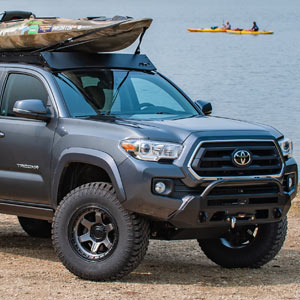 Truck / SUV
Truck / SUV
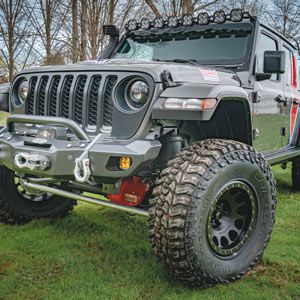 Jeep®
Jeep®
 Restoration
Restoration
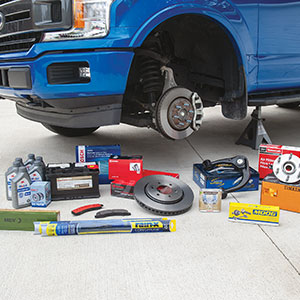 Stock Replacement
Stock Replacement
 Late Model Muscle
Late Model Muscle
 Tools
Tools
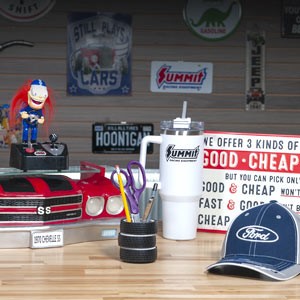 Gifts, Clothing, & More
Gifts, Clothing, & More
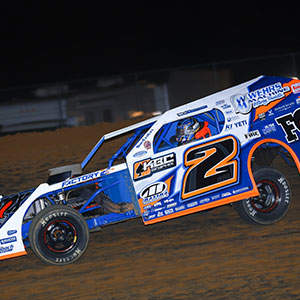 Circle Track
Circle Track
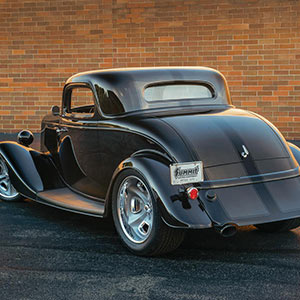 Street Rod
Street Rod
 Powersports
Powersports
 Paint & Body
Paint & Body
 Marine
Marine
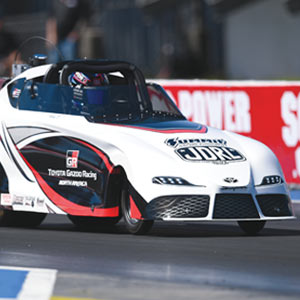 Jr Dragster
Jr Dragster
